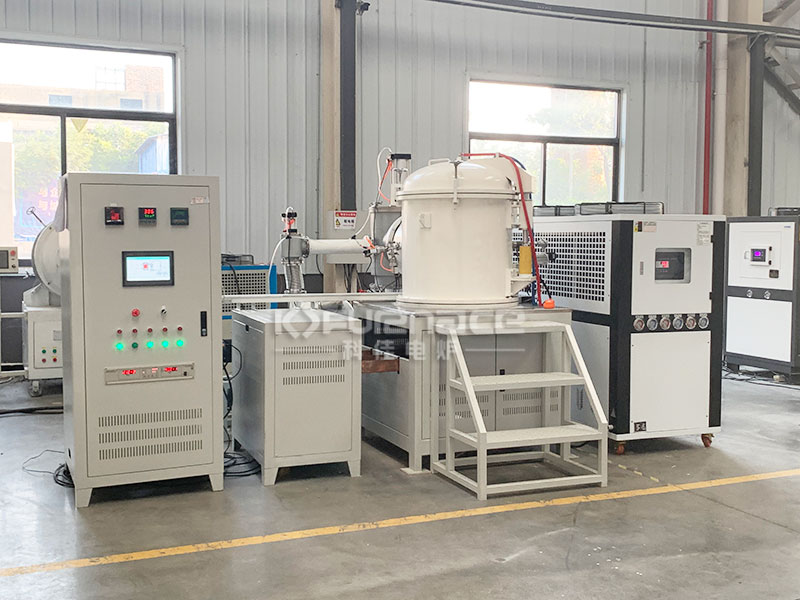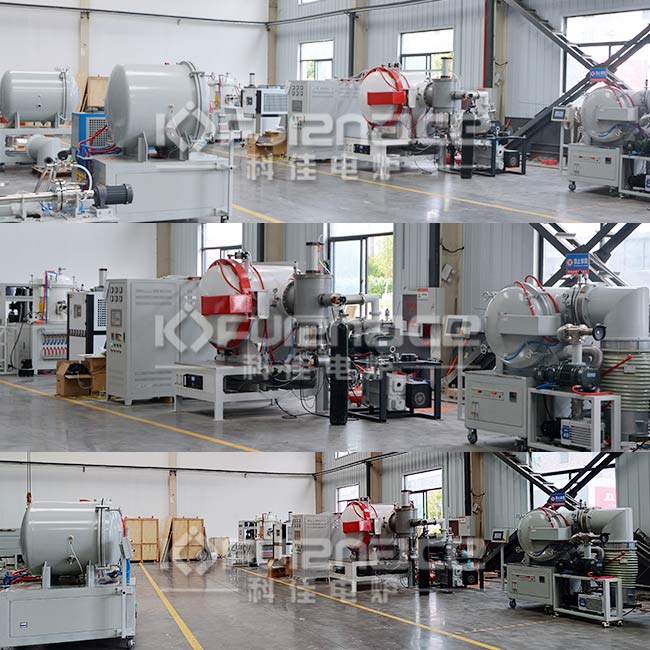The temperature range of a vacuum furnace generally varies depending on the specific model, purpose, and design. Let’s take a look at what the temperature range of a vacuum furnace is generally!

Graphite vacuum furnace with a temperature of up to 2000 degrees (click on the image to view product details)
1. Overview of temperature range
The heating temperature of a vacuum furnace is generally between 1100 ℃ and 2000 ℃. This scope covers various process requirements, from vacuum heat treatment at lower temperatures to high-temperature vacuum sintering, vacuum brazing, etc.
2. Specific temperature range analysis
Lower temperature range:
The heating temperature of some vacuum furnaces may be set between 1100 ℃ and 1600 ℃, which is suitable for some vacuum heat treatment processes that do not have particularly high temperature requirements.
Medium to high temperature range:
The heating temperature of most vacuum furnaces is concentrated between 1600 ℃ and 2000 ℃, which can meet the needs of most processes such as vacuum sintering and vacuum brazing.
High temperature range:
The heating temperature of some high-end vacuum furnaces can reach 2100 ℃ or even 2300 ℃. These types of furnaces are usually used for special processes that require extremely high temperatures, such as the melting and heat treatment of high-temperature alloys.
3. Factors affecting temperature range
The temperature range of a vacuum furnace is influenced by various factors, including but not limited to the following:
Heating element: The heating element of a vacuum furnace usually uses resistance wires, graphite rods, or silicon molybdenum rods, etc. The high temperature resistance and stability of these elements directly determine the maximum heating temperature of the vacuum furnace.
Furnace material: The furnace material needs to be able to withstand high temperatures without deformation or melting, so it is usually made of high-temperature resistant materials such as stainless steel, tungsten, molybdenum, etc.
Vacuum system: The performance of the vacuum system will affect the vacuum degree and temperature distribution in the furnace, thereby affecting the heating effect.
Control system: Advanced control systems can accurately control the heating temperature and vacuum degree, improving the stability and reliability of the process.

Different heating elements correspond to different maximum heat treatment temperatures (click on the image to view product details)
4. Conclusion
So, the temperature range of a vacuum furnace is generally between 1100 ℃ and 2000 ℃, and the specific temperature range depends on the model, purpose, and design of the vacuum furnace. When choosing a vacuum furnace, it is necessary to consider the specific process requirements and equipment performance comprehensively. At the same time, it is necessary to strictly follow the operating procedures for operation and maintenance during use to ensure the normal operation of the vacuum furnace and extend its service life.